A Journey Through Lewis and Clark Caverns State Park
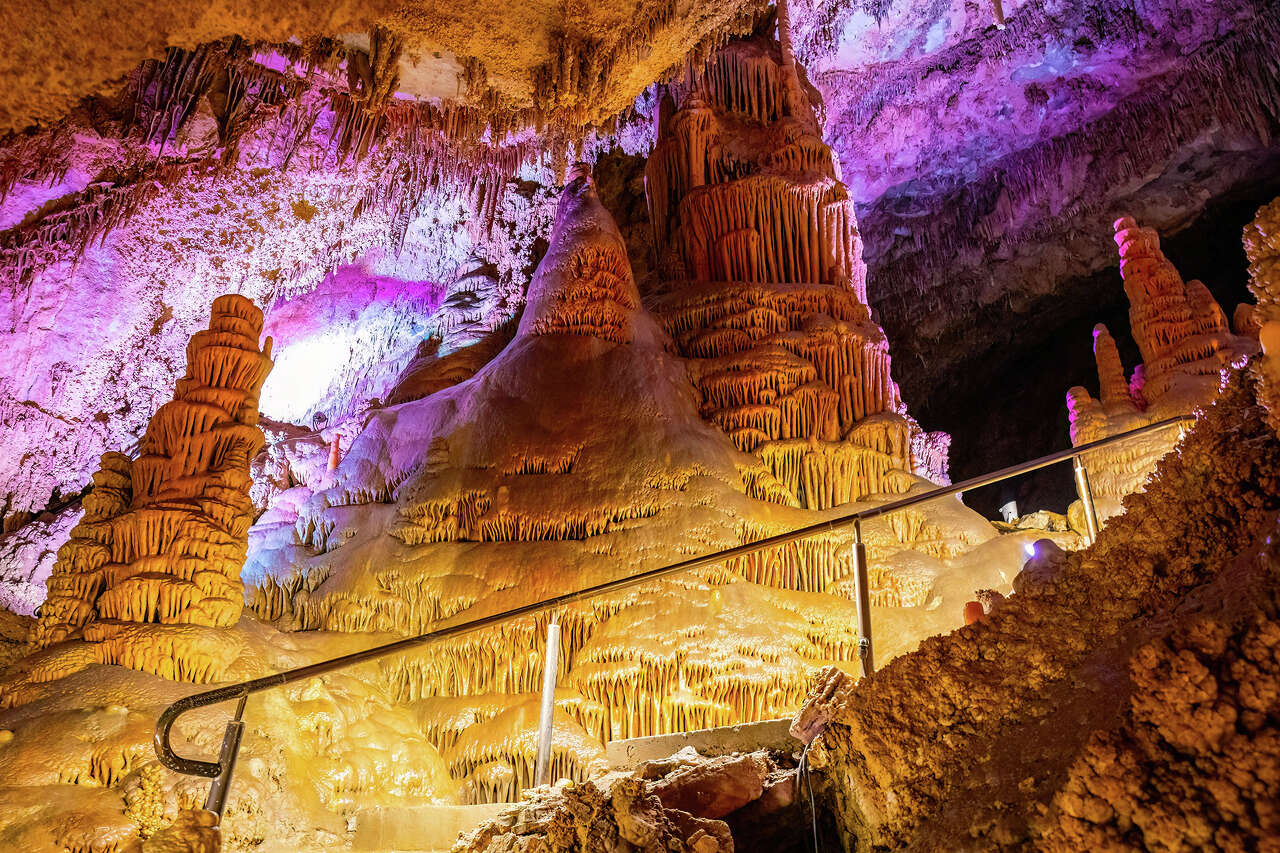
The limestone under my thighs felt cold and smooth as I sat down and scooched my way through a small opening in a rock. I was at least 100 feet underground in Montana’s Lewis and Clark Caverns State Park, and I was hoping I didn’t suddenly become claustrophobic as I descended farther and farther into the darkness.
I wasn’t the first person to worry about such things, and wouldn’t be the last. In fact, back in the early 1900s, this gaping cave in the middle of Montana was so highly regarded that the federal government considered making it a national park. Shortly before that, it had managed to achieve national monument status, but the federal designation ultimately didn’t stick.
President Theodore Roosevelt declared the site, once owned by Northern Pacific Railroad, a national monument in 1908 as part of a larger preservation push. Roosevelt established five new national parks and 18 national monuments during his presidency. The caves were named after the Lewis and Clark expedition that passed nearby in the early 1800s – despite the men not actually finding the cave. Rangers from Yellowstone National Park, over 100 miles away, made trips on horseback to periodically check on the cave, whose entrance was locked but regularly vandalized.
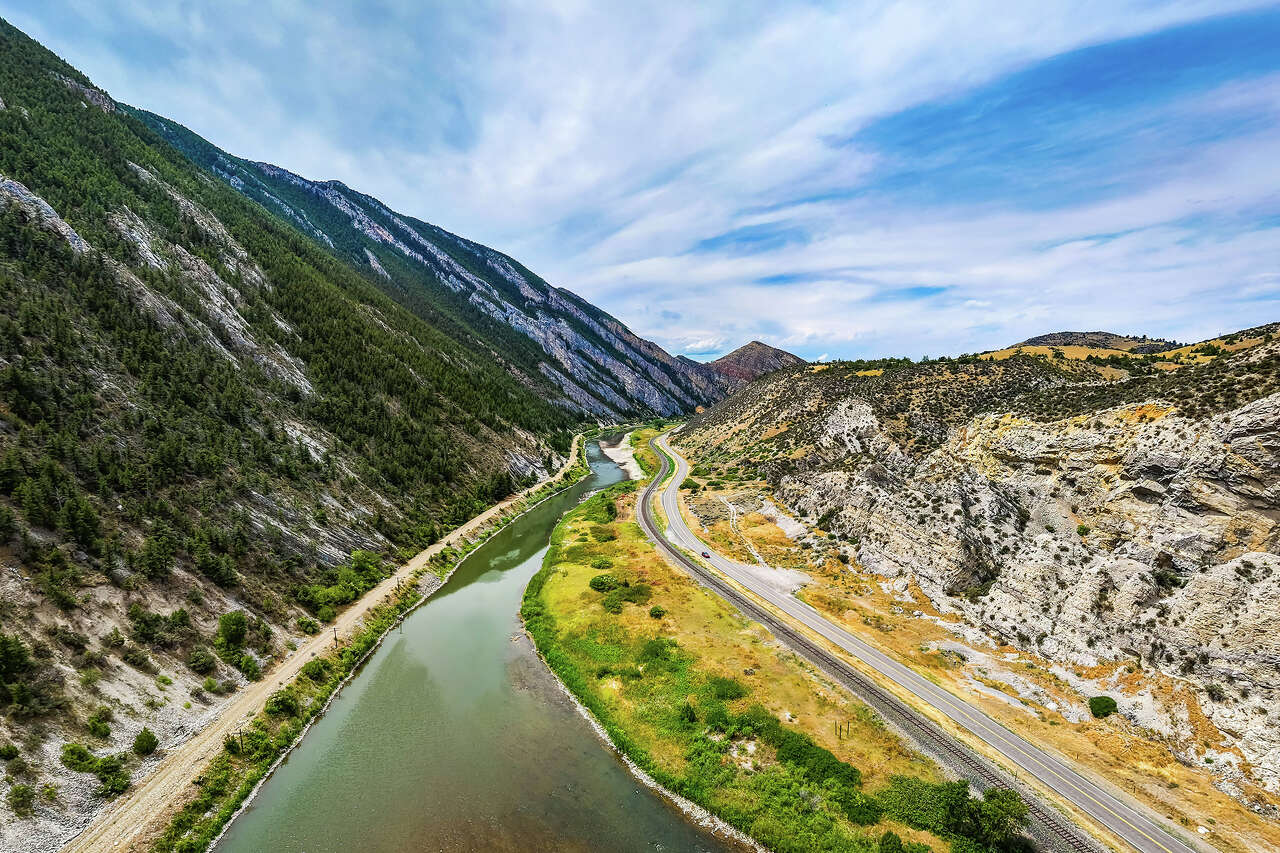
The cave was hard for tourists to reach, and would’ve been expensive to develop infrastructure within. According to National Parks Traveler, “a chronic lack of funds made it impossible to properly develop the cave, provide staffing, and open it for public use.” Montana Gov. Frank Cooney requested the property be turned over to the state, and in 1937, the federal government agreed. The state park opened in 1941.
I’d say the Park Service missed out.
Today, Lewis and Clark Caverns State Park is one of the largest known limestone caverns in the Northwest. It showcases unique rock formations that began forming 300 million years ago as plants and animals living in the shallow inland sea that covered what is now Montana and the northern Plains. These organisms mixed with sediments and accumulated on the sea floor for thousands of years; eventually solidifying into the ornate limestone features I ducked under and walked through.
If you plan to visit, you’ll need a reservation for a cave tour led by a state park staff member. (Exploring the caves on your own isn’t permitted for safety reasons.) Tickets are $15 for adults and $10 for children. Tours run from May through September, and tickets can be purchased beginning in February. There are also special candlelight tours around Christmas.
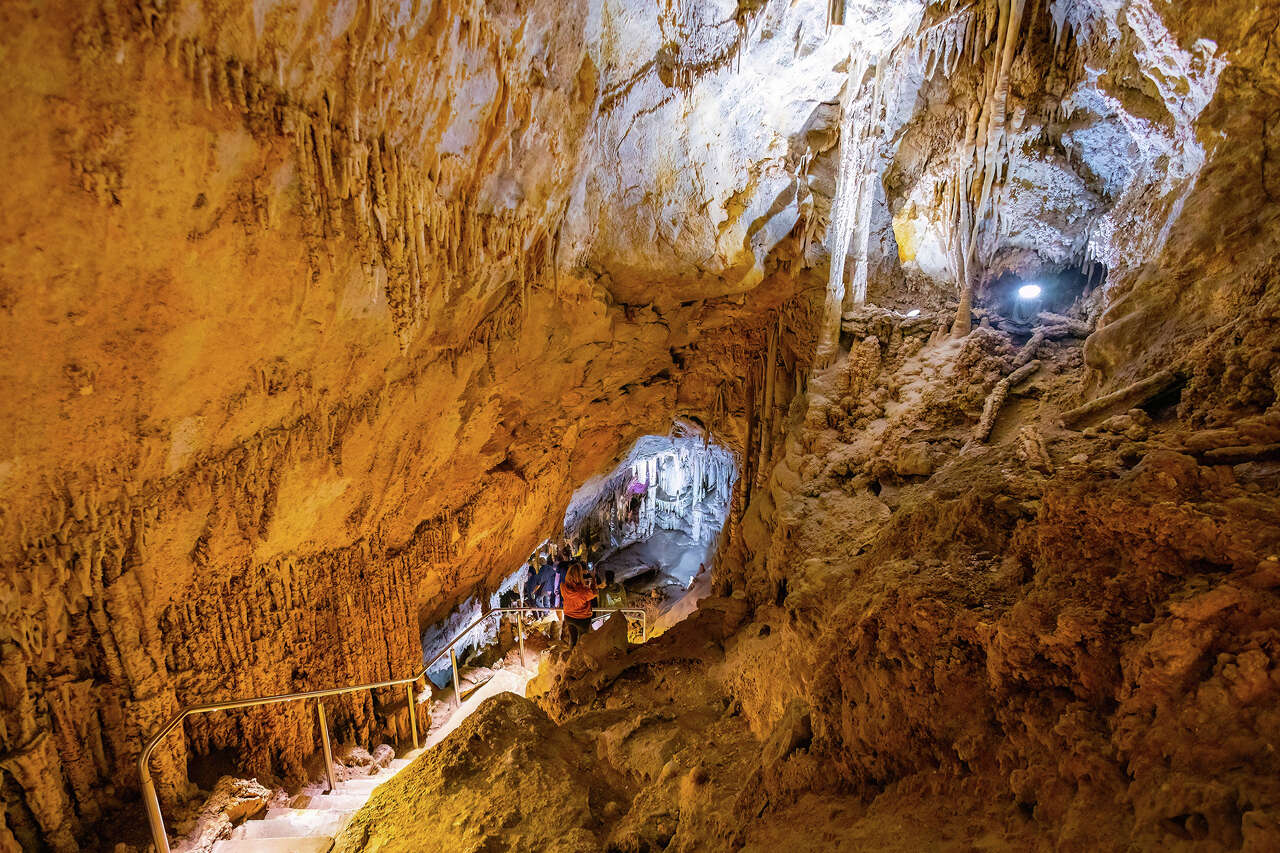
There are two tour types to choose from. The classic tour is a moderately difficult, two-hour, 2-mile guided walking tour. The paradise tour is an easy, one-hour, 1.5-mile option that’s best for young children. I chose the classic option, and on a weekend day in mid-August, the tour was full when I arrived. Luckily I booked ahead of time! The park sees about 80,000 visitors yearly, according to state statistics, and about 400 to 500 people a day for cave tours in the summer, a tour guide estimated.
My journey into the cave with guide Rachel Mills and about 15 other people began with a short hike from the visitor center – about three-quarters of a mile with 300 feet of elevation gain on a paved path. The trail winds up a hillside, from grassy fields studded with sagebrush to juniper trees. The August afternoon sun beat down on my group, which ranged from elementary school children to grandparents. Everyone made it to the top, inspired by the cool, dank respite of the cave’s mouth.
Once inside, we came face to face with a bat colony that lives near one of the cave’s main entrances. Some of the bats had recently given birth, and after watching them swoop and hang quietly from a distance, we continued downward into the cave. Fair warning: The classic tour probably isn’t for you if you feel uncomfortable navigating steep, sometimes slippery stairs or bending over to shimmy through a few tight spots.
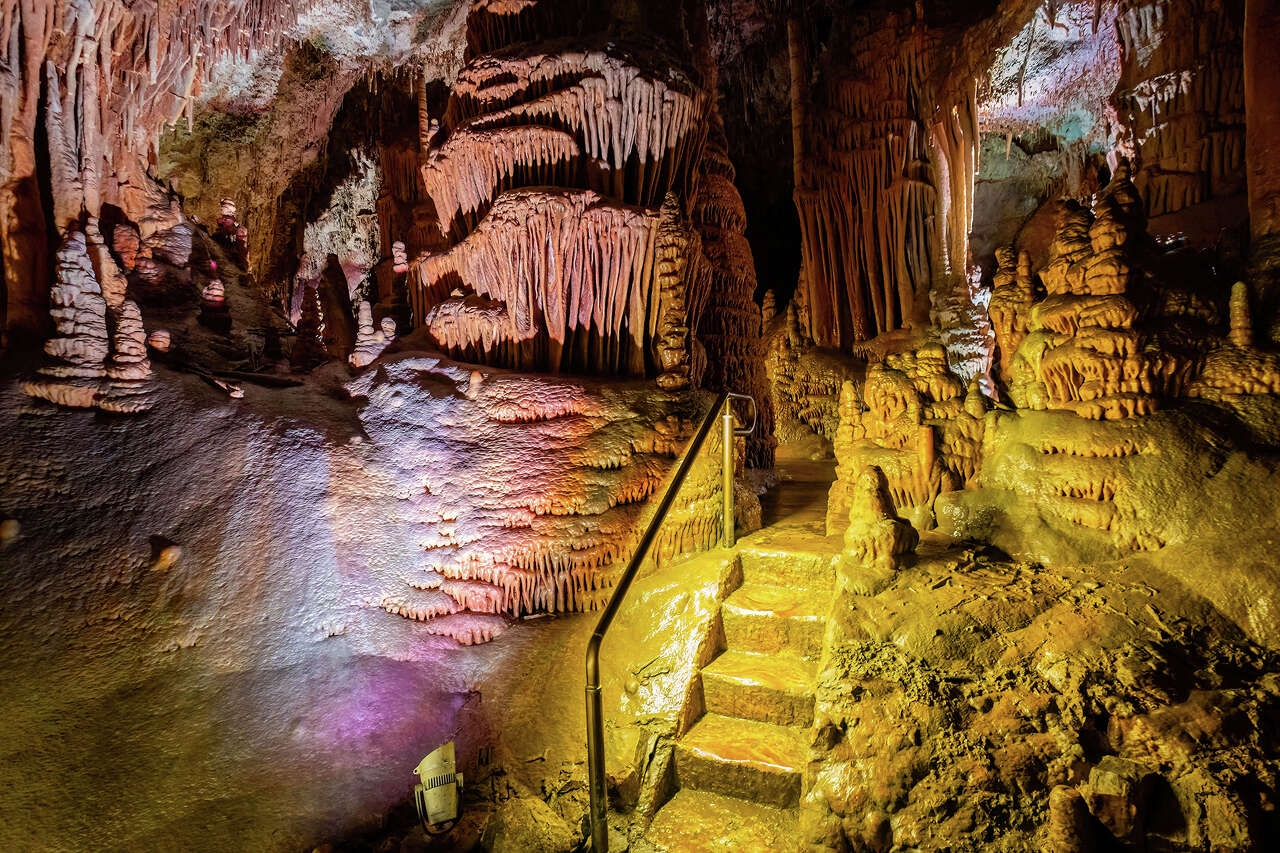
The limestone labyrinth was, however, modified for human exploration in the early 1900s. Mills turned wall lights on and off for us as we entered different sections of the cave; there were also hand rails and hundreds of stairs cut into the rock.
As we continued walking into its depths, she taught us about the history. According to Mills, tribal members from the Blackfeet Nation initially found the cave, which sits 1,400 feet above the Jefferson River. In winter months, the cave – which hovers around 50 degrees Fahrenheit – emits steam, earning it the seasonal nickname “the breathing mountain.” Ranchers and hunters who lived in nearby Whitehall began exploring the hole in the late 1800s, eventually breaking through rock formations partially blocking the entrance to gain access.
D.A. “Dan” Morrison, a local businessman who owned a limestone quarry nearby, soon began giving unauthorized cave tours, which continued until his death in 1932. (Morrison cut the federal government’s locks on the entrance and replaced them with his own, according to our tour guide and signs in the visitor center.)
At that time, tours were an arduous daylong adventure. Visitors would take a two-hour train ride from the city of Butte, Montana, and climb up the hillside by foot or on horseback from the train tracks below. Then, they’d descend into the cave by rope – climbing down onto various landings, stopping to rest, and then climbing all the way back up 250 feet of rope. Lanterns and candles were the only way to see into the darkness.
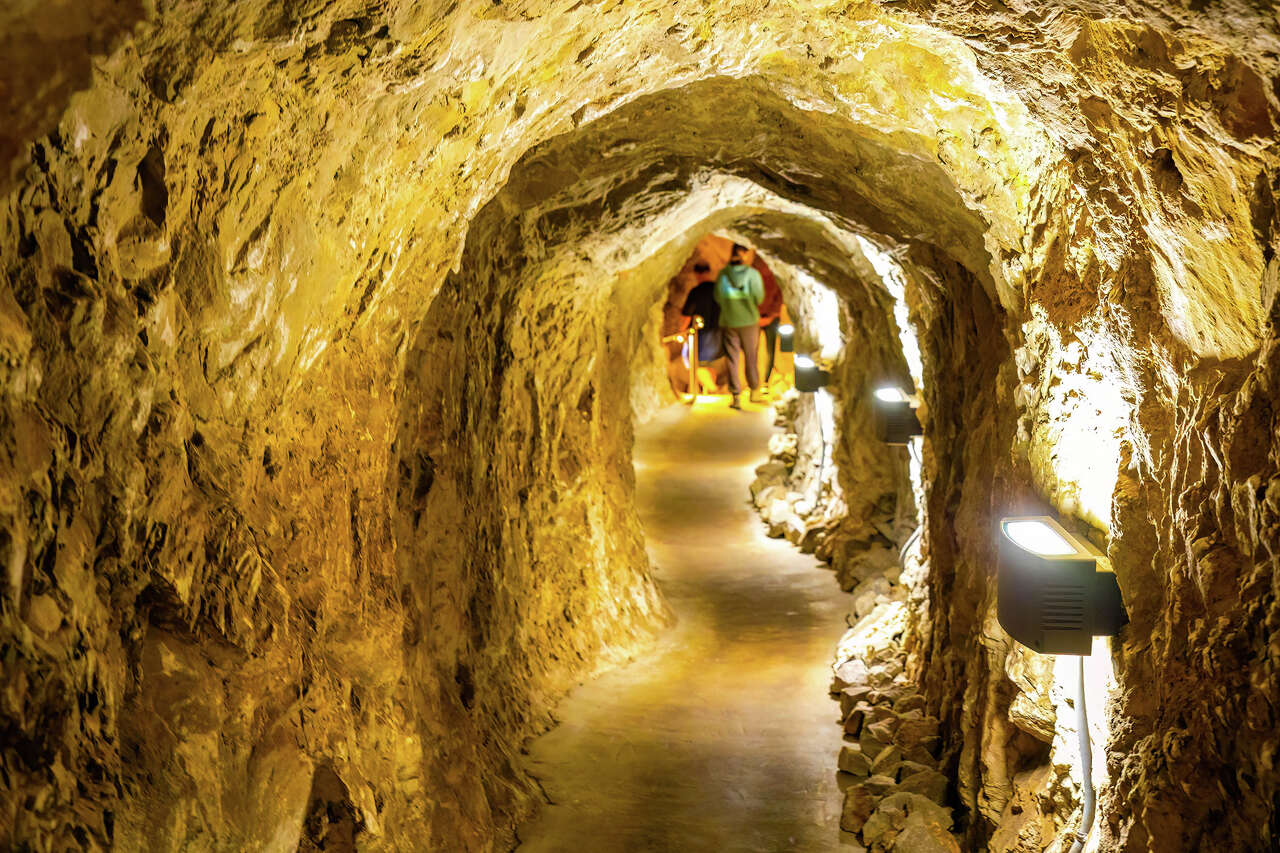
Morrison, who reportedly never held a title for the caves or surrounding land, eventually built a 600-stair spiral wooden staircase and blasted a new entrance to improve cave access. He also allowed visitors with chisels and hammers to take whatever they wanted from the cave; today, broken-off stalactites tell the tale. About 200 Civilian Conservation Corps workers rehabilitated the cave, removed the creaky staircase and carved their own rock stairs while they worked there between 1935 and 1941. They also built a 3-mile access road, the visitor center, parking lot and trails.
The air in the caverns smelled chalky and moist, and I shivered as I cooled off from my sweaty hike up. I pulled on a fleece jacket to stay warm, and ogled the fascinating rock formations of the Cathedral Room, one of several connected chambers within the winding cave network. Water dripped from the ceiling, and our tour group’s voices echoed in the abyss. Flowstone, a type of calcite deposit, hung on the walls like waterfalls frozen in time. Stalactites, calcite formations that hang from the ceiling, looked like white and gold soda straws. Stalagmite features, which start at the ground, grow about the height of one sugar cube a year. Maybe someday, they’ll reach the ceiling.
We entered room after room, gawking at rocks. Mills described ribbon rock, a type of rock with bands of limestone and other deposits, like “cave bacon.” Globulites, a type of crystallite rock, looked like coral, broccoli or cottage cheese. Mills called them “cave popcorn.” I was getting hungry.
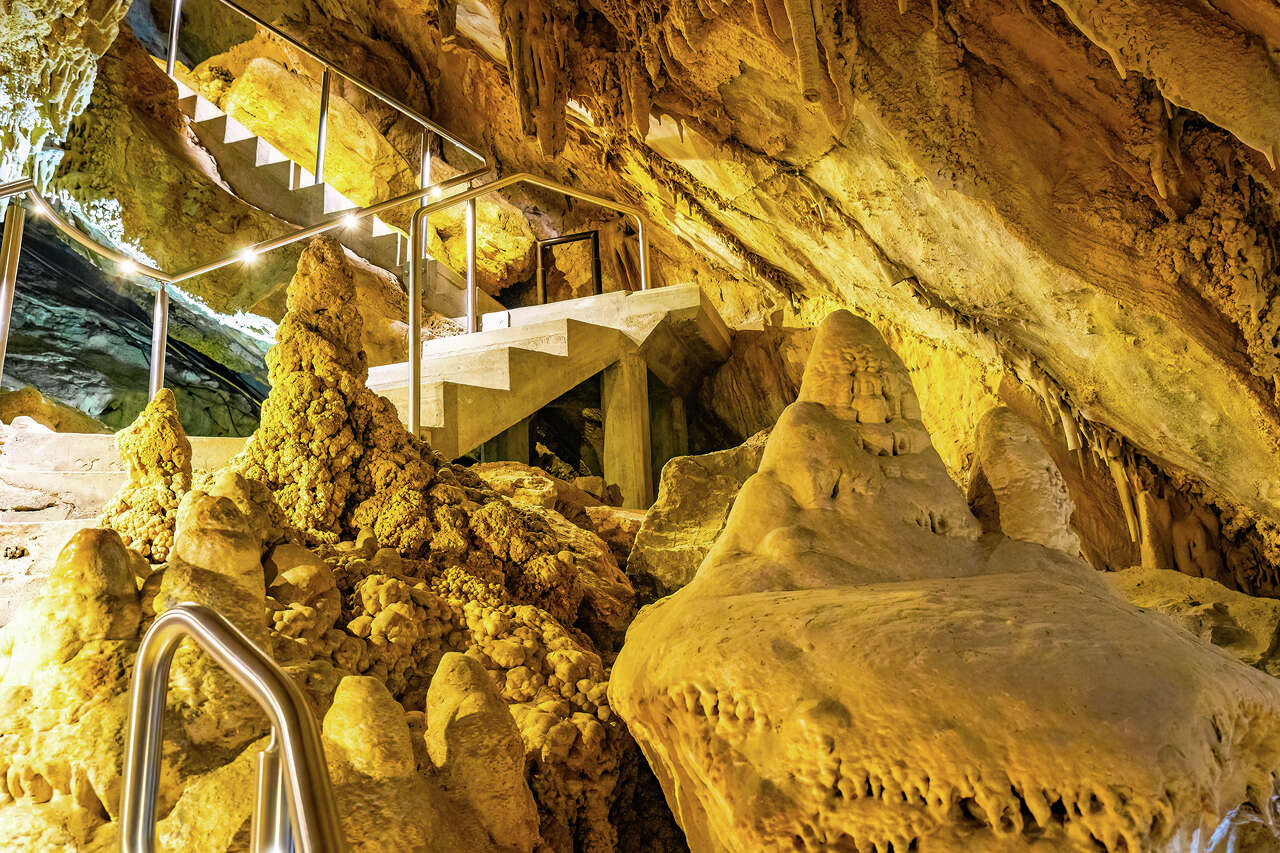
As we reached the end of the tour, Mills gathered us together. What would visiting the cave be like before modern light fixtures? She counted down, then clicked off the lights. We were plunged into darkness. “Goodnight, everyone!” a child on the tour called out. I certainly wouldn’t want to navigate the cave this way, or be stuck inside it if a candle blew out.
But of course, that didn’t happen. We journeyed down a tunnel the length of a football field and popped back out into the blazing afternoon light. I blinked several times, blinded by its brightness. Even though the cave and its intricate rock features never became a national park, it’s definitely still worth exploring.



